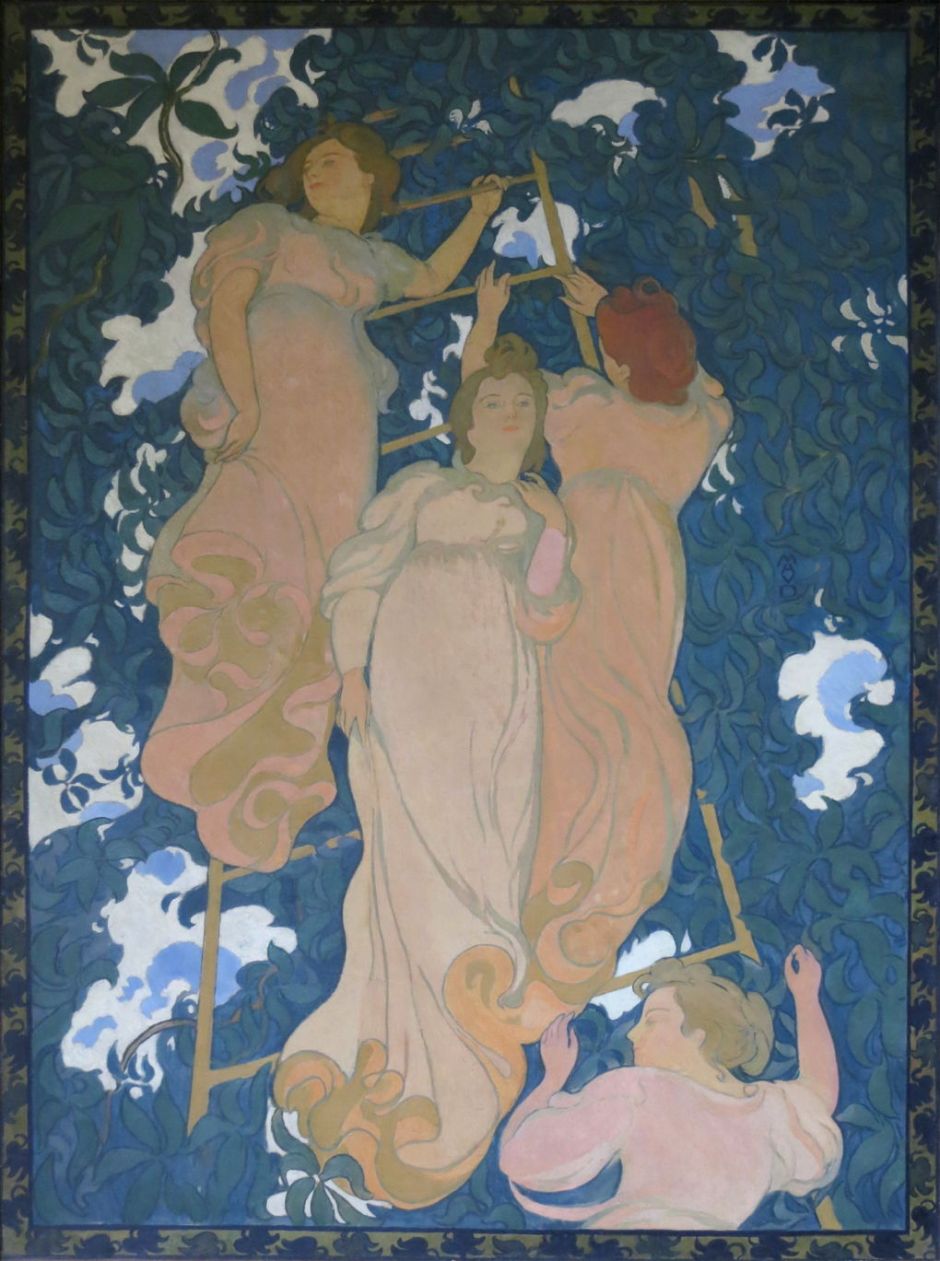Ladders are older than human history, although they relatively seldom rise to the occasion in paintings. When they do, as a way to ascend to heaven they may have deeper meaning. This brief survey shows a selection of rigid, rather than rope, ladders in different visual contexts.

Murillo’s painting of Jacob’s Dream, from 1660-65, adopts a traditional approach. In this story from the Old Testament book of Genesis, Jacob is asleep at the foot of the ladder, as angels ascend and descend its rungs, making their way through a bright gap in the clouds. Most who have painted this popular scene constructed grander staircases rather than a simple ladder, and William Blake even chose a spiral staircase to make the angels’ task safer and easier.
In the Christian tradition, the strongest association with ladders is the Crucifixion.

Jacopo Tintoretto included ladders in both his major paintings of the Crucifixion, here the huge second canvas from 1565 for the Albergo in the Scuola Grande di San Rocco in Venice. His emphasis on the use of ladders and tools to trace the process through its stages enhances its grim realism.

The centre panel of Hieronymus Bosch’s Haywain Triptych from 1510-16 features the haywain in the midst of a dense procession of figures slowly making their way from left to right. The ladder being placed against the hay is a reference to the Crucifixion, reinforced by the figure of Christ looking down on the scene, his hands held out to show his stigmata.

John Everett Millais’ Christ in the House of His Parents (also known as The Carpenter’s Shop) (1849–50) shows an entirely imagined scene, one not even alluded to in the Gospels, in which the young Jesus Christ is being comforted by his kneeling mother, after he has cut the palm of his left hand on a nail. The composition abounds with symbols of Christ’s life and future Crucifixion: the cut on his palm is one of the stigmata, and blood dripped from that onto his left foot is another. The young Saint John the Baptist has fetched a bowl of water, indicating his future baptismal role. A triangle above Christ’s head symbolises the Trinity, and a white dove perched on the ladder is the Holy Spirit. A flock of sheep outside represents the Christian flock.
Ladders also became associated with their role in warfare, enabling soldiers to scale fortifications.

In this detail from Julius Schnorr von Carolsfeld’s account of Ariosto’s Orlando Furioso, Rodomonte’s men are scaling ladders placed against the walls surrounding Charlemagne’s city of Paris. As more Saracens rush up their ladders, the defending French withdraw to the next layer of their defences to watch their attackers drop into a fearful trench where they are killed en masse.
More recent years have brought ladders being used for more peaceful purposes such as picking fruit.

Leandro Bassano’s Allegory of the Element Earth from about 1580 is a copy of a work originally painted by his better-known father Jacopo. With the foreground full of the fruit of the earth, and a child up a ladder still picking more, Cybele flies across the sky in her chariot drawn by lions.

Nicolas Poussin’s reference to a story from the Book of Numbers in Autumn (1660-64) shows Israelite spies who first visited the Promised Land returning with grapes as evidence of what lay ahead. Behind them is a picker up another ladder, reaching for apples.

In 1891, towards the end of her sadly short career, Berthe Morisot painted these young women up a ladder picking cherries.

Maurice Denis interpreted the popular contemporary motif of women picking fruit in high Nabi style in The Ladder in the Foliage (1892). Gone are patterned dresses, replaced by flowing curves more typical of art nouveau illustrations. There are no fruit either, and the poses of these women suggest a more spiritual purpose in their ascent.
Not all ladders are great, or of military or spiritual importance. Sometimes the smallest is more of a help, though.

Benjamin Williams Leader’s Welsh Cornfield from 1862 shows a cereal crop cut by hand into stooks ready for threshing, in the rolling countryside of Wales. One of the women is using a ladder stile to traverse the field’s dry stone wall.

